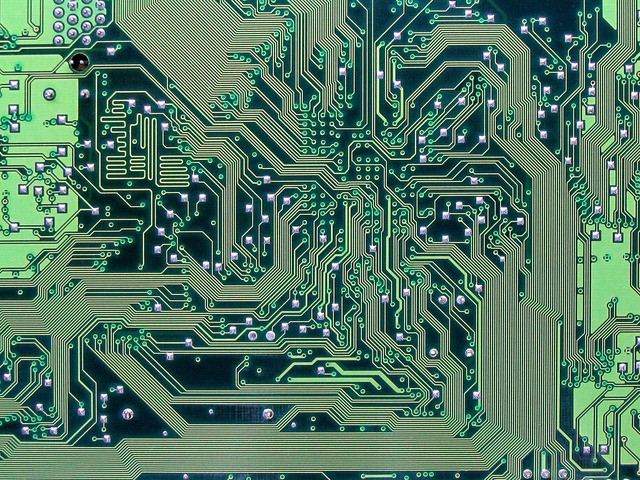
If there’s one thing that differentiated Consumer Electronics Show (CES) 2016 from other years, it is the scale. CES 2016 was by far the biggest to date; 180,000 attendees and 20,000 new products launched by 3,600 exhibitors. But CES also demonstrated scale in different ways.
Product categories that seemed exorbitantly out of reach for mainstream consumers even just last year, now have the opportunity to truly reach mass scale. The explosion of connected devices also shows the potential power of data mining at scale. Advertisers now have the opportunity to develop rich, immersive experiences for consumers utilizing virtual and augmented reality. Here are just a few CES tech categories of particular relevance to advertisers:
Wearable Technology
Wearable Tech is a category that is exploding, with 20% compound annual growth expected over the next 5 years. Often using a smartphone as a central intelligence hub, wearables are becoming more affordable, reliable and relevant.
Intel is pioneering the wearable tech industry by driving down costs and integrating technology into ordinary consumer experiences. The Curie chip (named after Marie Curie) is a tiny processor the size of a button. Costing just $10 to produce, this chip can be mass produced and embedded in just about any consumer item. This one innovation has the power to push wearables into the mainstream.
The Intel Memory Mirror is a device that makes the instore shopping experience digital, interactive and social. It allows the consumer to step in front of the mirror, see themselves in 360°, try on clothes, and see previous try-ons without having to redress. This can create opportunities for advertisers as consumers can be potentially retargeted with personalised content as they move around the shopping mall.
Samsung demonstrated a new watch that doesn’t require a phone as it has its own connectivity. It looks like a watch too, and not like a science project! High-end smart wearables from Fossil, Swarovski and Tag Heuer also showed that wearable tech can be fashionable. As connected wearable devices become more widely adopted, advertisers will have greater opportunities to tap into location specific data trails. This will in turn allow greater opportunity to target consumers based on individual needs and behaviours.
Video Recording Devices
Consumer recording devices are becoming cheaper, more mobile and better quality. GoPro disrupted Polaroid, and now Polaroid is disrupting GoPro. The Polaroid Cube is an amazing little 35mm HD camera that is water proof, durable, high quality, light weight and can be mounted to handlebars, golf clubs….you name it! Ricoh launched the Theta S 360 Camera the size of a small TV remote control that contains two fish eye cameras. Early adopters now have the ability to easily create 360° HD content.
These new devices could offer advertisers an amazing source of high quality user generated content that can be contextualized and curated for any screen including mobile, digital and OOH.
Immersive Experiences: VR and AR
New virtual reality and augmented eality products now offer brands the opportunity to immerse consumers in mind-blowing experiences. At the lower end of the market, the $99 Samsung Galaxy VR offers an affordable introduction to the world of VR. HTC Vive takes steps to literally place control in the hands of the users, with a wireless joystick allowing interactivity. Motion sensors detect special movement and allow the consumer to move within a small radius. The Oculus Rift is finally launching this year , along with new products such as Leap Motion, and the augmented reality giants Magic Leap and Microsoft HoloLens.
VR and AR offer potential for interactive, immersive storytelling. Brands that get onboard early are rewarded with positive associations with the technology. Opportunities for experiential marketing in the true sense of the word abound, whether this be in the home, shopping mall or venue.
Smart Cars
Nine automotive OEMs exhibited at CES showcasing their range of semi-autonomous cars. If 2010 was the year the driver was completely in charge, 2015 is when the driver is mostly in charge, 2020 will be when the car is mostly in charge. By 2025-2030…the car will be completely in charge.
We need to see the car as another digital media format. A connected device for collecting behavioural data, and delivering information and media.
Smart in-cabin displays with LTE connectivity and personalized content were a staple of the cars on display at CES. Groupon and Chevrolet have partnered to provide Chevrolet drivers access to Groupon’s entire marketplace of location-specific deals available through OnStar, the brand’s navigation and connectivity service.
Very relevant to location advertising, this could potentially open up a world of re-targeting based on consumer preferences and previous retail actions.
Implications for Advertisers
CES highlights three broad implications for the Out of Home industry.
First, consumers are expecting high quality experiences everywhere, both in and out of home. Advertisers need to continue to up their game with producing high quality, immersive, content-rich experiences. OOH has become so much more than just static inventory. VR is poised to become just as much a part of the OOH ecosystem by delivering quality consumer experiences.
Second, the opportunity from wearable technology will allow a bigger variety of data points that advertisers can potentially tap into.
Finally, digital media will not just be in the formats we’ve come to expect. Anything will be a digitally immersive experience, from cars to changing rooms. Advertisers should think beyond standardized conventional formats and treat any connected device as an opportunity to connect with a human.